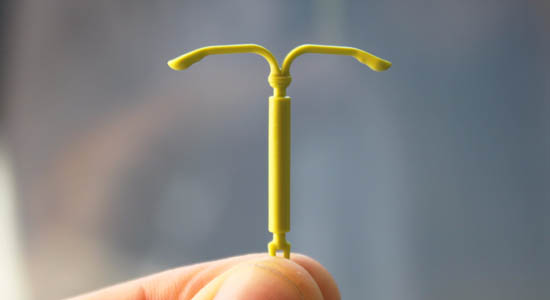Long-acting reversible contraceptives like IUDs are highly effective in preventing pregnancy, and their use is on the rise. But as cases of sexually transmitted diseases reach an all-time high, public health officials are concerned that a growing reliance on such methods is leading to declining use of condoms, which prevent STDs.
“They are protecting themselves against pregnancy, but not protecting themselves against STDs,” says Mario Perez, who directs the Division of HIV and STD programs at the L.A. County Department of Public Health. “Condoms continue to play a role in disease transmission.”
So is the increasing use of IUDs and other long-acting methods contributing to rising STD rates?
It’s unclear, says Stephanie Arnold Pang, director of policy and government relations at the National Coalition of STD Directors.
“These are things that are happening at the same time and in tandem, but we can’t necessarily say there’s causality between them,” she says.
The California Department of Public Health reported this week that rates of chlamydia, gonorrhea and syphilis increased for the third year in a row. It says more than 250,000 cases of STDs were reported in 2016, a 40 percent increase compared with 2012. Young people, African-Americans and gay and bisexual men had the highest infection rates.
Experts say declining condom use is definitely one factor contributing to the increase in STDs; others include a lack of education, a shortage of funding for prevention programs and the growing popularity of dating apps.
Meanwhile, there’s been an uptick in the use of long-acting contraceptives like IUDs, which have failure rates of less than 1 percent. About 9 percent of women ages 15 to 44 used IUDs in 2009; nearly 12 percent used them in 2012, according to the Guttmacher Institute.
Experts agree that as more young women use methods like IUDs for pregnancy prevention, there should be more public health messaging about the importance of using condoms to prevent STDs.
A 2016 study in JAMA Pediatrics found that young women who use methods like IUDs are about 60 percent less likely to use condoms compared with women who use the pill.
Women who use long-acting methods like IUDs, “should be very clear and aware of their STD risk and be encouraged to use dual methods,” Pang says.
Young women should also be screened for STDs once a year, she says. Even though methods like IUDs last five years or more, Pang says women who use IUDs should still see a doctor annually to get tested.
David Harvey, executive director of the National Coalition of STD Directors, points to a similar situation with pre-exposure prophylaxis, or PrEP, a powerful HIV prevention tool.
Some have expressed concerns that use of PrEP would lead to decreased condom use and increased STDs. Harvey says people on PrEP get tested for STDs every three to six months, “so we’re catching and diagnosing more cases.”
“It is not necessarily the case that PrEP is driving increases in STD rates,” he adds. “Because we are doing more testing, we’re catching more cases, and we’re treating, and that is a very good thing.”




















